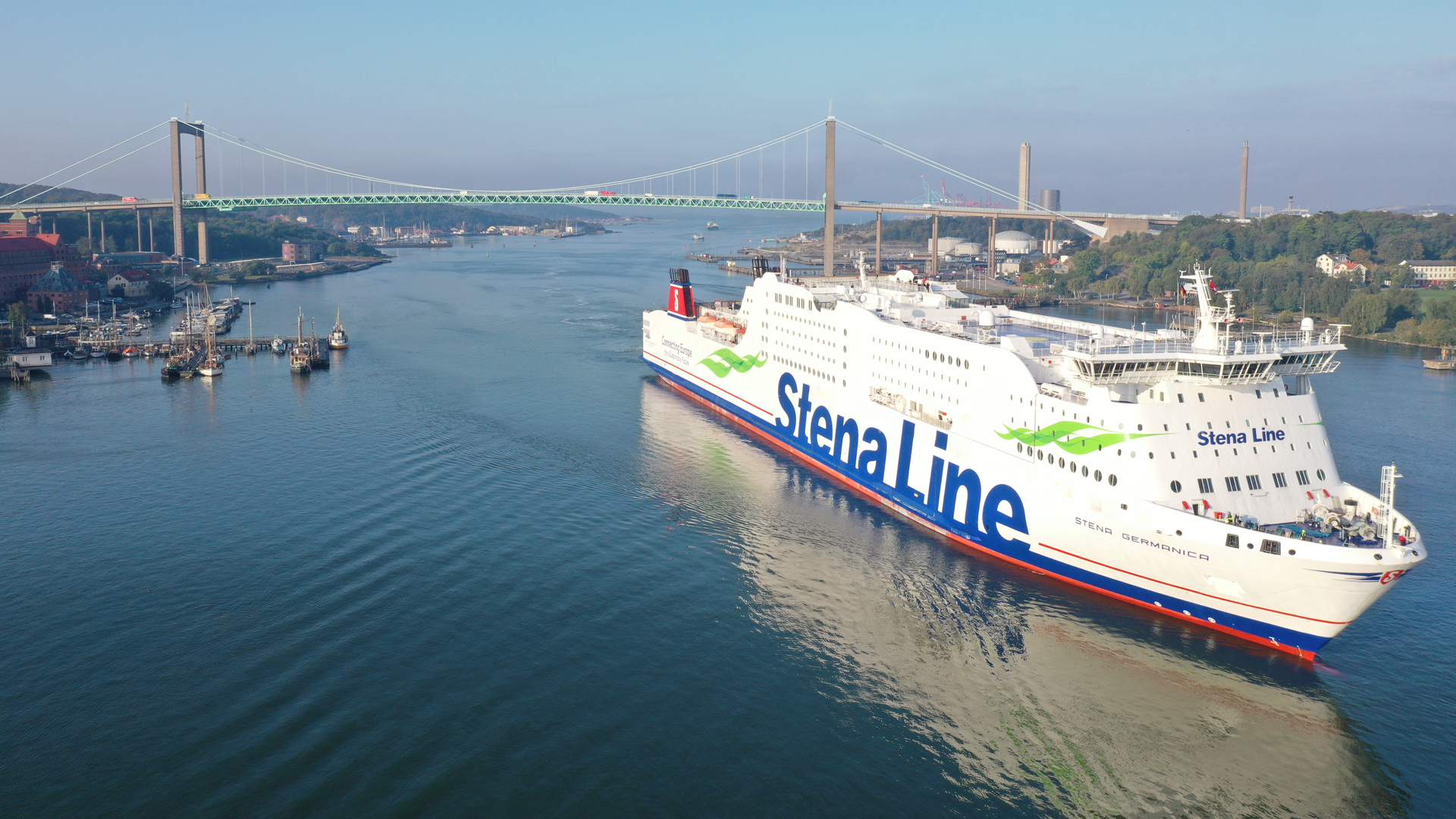Climate-neutral with green fuels
For Maersk, e-methanol is the best and most rapidly feasible alternative fuel. The energy required for producing this is solar and wind-based.

Stena Line is constantly developing new intermodal solutions for freight, and combines transport by rail, road and sea. The sustainability strategy of this European ferry group with a fleet of 38 vessels and its German site in Hamburg is based on a holistic approach. Organization of efficient transport chains is the prime consideration for its pre- and post-ferry transport operations. The group offers accompanied and unaccompanied shipments, project cargo, intermodal services and also direct train services on the Rostock–Trelleborg route. In port operation, Stena Line offers customer incentives with such projects as Green Priority, whereby in specific ports e-trucks receive preferential access to the ferry. Green power is used in all Stena Line’s ports and terminals. In seven of the latter, 14 ferries of the fleet use shore power, with an upward tendency .
“At Stena Line we are convinced that the most sustainable energy is not consumed at all,” stresses On many of its ships, ferry shipping company Stena Line uses the Stena Fuel Pilot, which helps to improve voyage routing – and hence to save up to five percent of fuel and the related emissions. © Stena Line The methanol ferry ‘Stena Germanica’ has set industry standards. The project is serving internally as the basis for long-term transformation of the fleet Mikko Juelich, Trade Director and CEO of Stena Line. The company is therefore continually modernizing its fleet and investing in energy-efficient ships and projects. For instance, Stena Line is equipping many of its ships with the Stena Fuel Pilot that with AI-based technology improves voyage routing. “This saves us between two and five percent of fuel, plus the corresponding emissions,” he adds
Since 2019 Stena Line has been putting new ships of the E-Flexer class into service in various trades. These are notable for optimized engines and hull designs, as well as ample cargo capacity. Juelich: “All E-Flexers are gas-ready, and can therefore readily be converted to the use of alternative fuels.”
In addition, the methanol ferry ‘Stena Germanica’ has set fresh industry standards. As part of a pilot project, she has already been successfully refuelled with recycled methanol from steel production, which once again distinctly improved the fuel’s carbon footprint. This project will also serve internally for the long-term reconstruction of the fleet. Since methanol causes practically no sulphur or particle emissions, and 60 percent less nitrogen emissions than traditional marine fuel. “In theory, all the ferries in Stena Line’s fleet can be converted to methanol operation,” says the CEO.
Yet conversion will require substantial investments. To boost the transition to sustainable shipping, Stena Line is therefore searching for the best possible option for every route and every vessel. Yet in view of current political and regulatory developments, we are convinced that where fuels are concerned, the transformation will again gather momentum, with such alternatives as methanol attracting increased interest in the near future,” adds Juelich.
Stena Line is also keeping an eye on the most recent developments in technology in the maritime sector. One example is the ferry ‘Stena Jutlandica’, with a one-megawatt battery on board, that is used during port manoeuvring in Gothenburg. With continuous further development of battery capacity, the aim is to put the first fully emission-free, battery-powered ferry into service in 2030